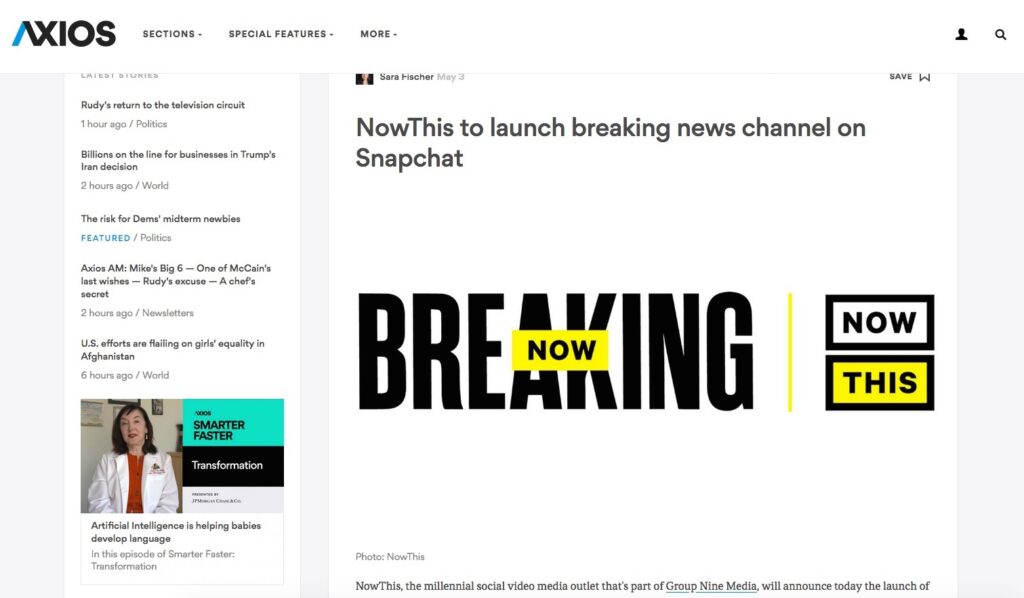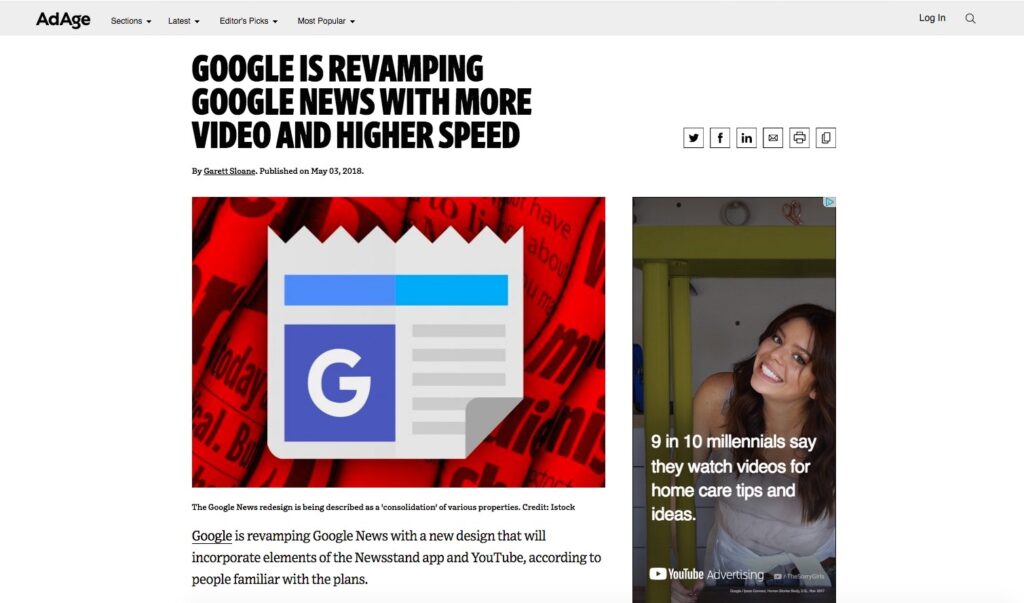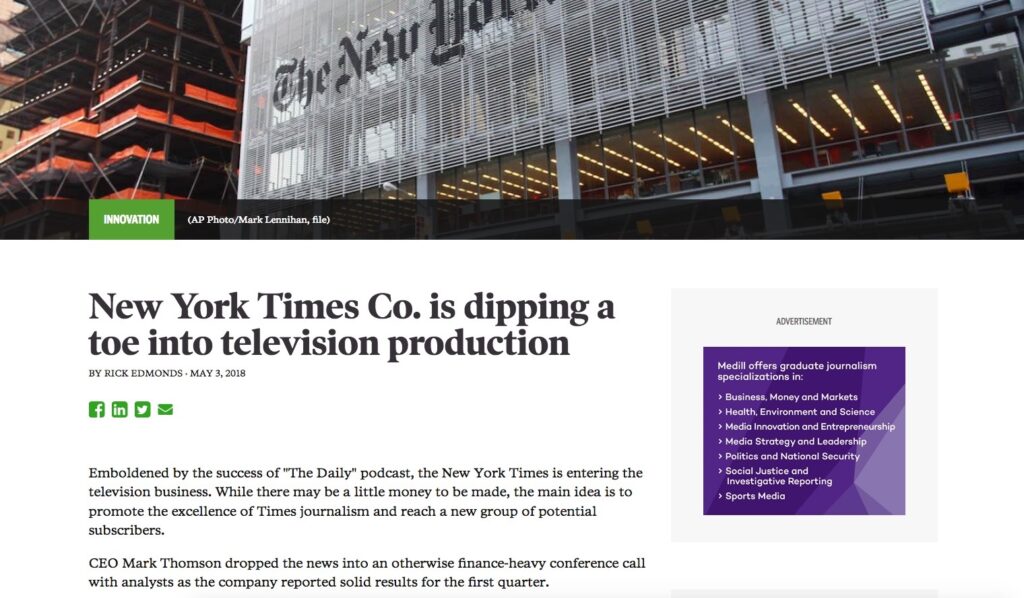I have said before — and I’m about to say again — that I have “seen the future” of electronic journalism, and it is “on the phone.”
The folks at NowThis were among the first companies to build a business on this realization. The notion began at the HuffPost, when that successful online publication decided to start producing full motion video. But it chose to emulate MSNBC’s liberal-chat format. (A decision that proved wrong…) That led a key member of the creative team to jump ship, and help create NowThis, which targets people who get their news on the phone.
Last week Axios reported that NowThis is launching a breaking news channel on Snapchat. Why? Because, increasingly, people don’t view news “on the phone.” Rather, they view news via an app on their phone. And what better app to ally themselves with than Snapchat? It looks to be a very smart move…
Meanwhile Ad Age, an old-style print magazine about the advertising industry that has reinvented itself as an online source of media information, reports that Google is stepping up its game when it comes to covering news. The Google Newsstand app is said to be on the way out, and a new app is on the way which will be faster and have more video content. Full-motion video is the “secret sauce” that attracts digital viewers. Printed pages with the occasional photo or graphic, not so much. This is why we teach NYFA Broadcast Journalism students to be multimedia Journalists (MMJs).
The Poynter Institute is one of the leading journalism research institutes in the United States. A recent post had the headline, New York Times Co. is dipping a toe into television production. There are two fascinating aspects to this story. The first is that The Times is using digital platforms (podcasts, feature-style films) not to report the news, but to bolster their image as an outstanding source of unbiased reporting. They don’t see these efforts as potential profit centers as much as ways of shaping public perceptions about The Times. It is certainly not conventional television news.
And that’s the second tantalizing aspect of the story. Unreported — and perhaps unknown to the reporter — was that The Times started a subsidiary to produce long-form TV news programming back in the 1990s. For a variety of reasons, it didn’t work out. Its founder, a long-time friend and former PBS colleague, would go on to do quite well sans The Times. You may have heard of a little thing he helped create called NY1?
And speaking of news, we got some last week from NYFA graduate Karen Hua. She just got her first on-air reporting job:
Some personal breaking news … In just two weeks, I’ll be starting as an on-air reporter for the NBC station in Bakersfield, California! Thank you to my mentors, teachers, and dearest friends for supporting and encouraging me this past year … ENDLESS thanks, Bill. Can’t say it enough — literally would not be here without you, or Evgenia!
I should point out that Karen is a graduate of our 12-week Evening Broadcast Journalism program. Proof that, if you want to reinvent yourself while working a day job, learning key content creation skills can help you get to where you want to go. (In this case, Bakersfield, California … which I am confident is just the first step up the ladder, and back to NYC!)
by nyfa



